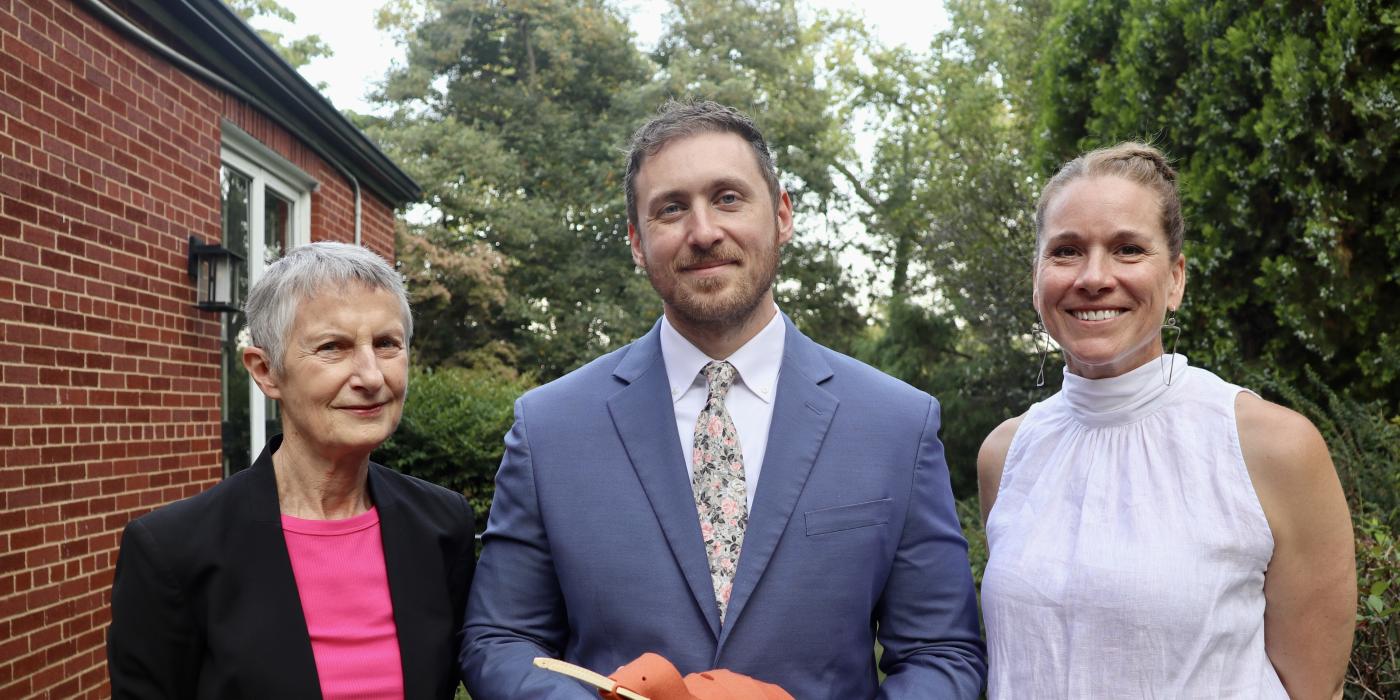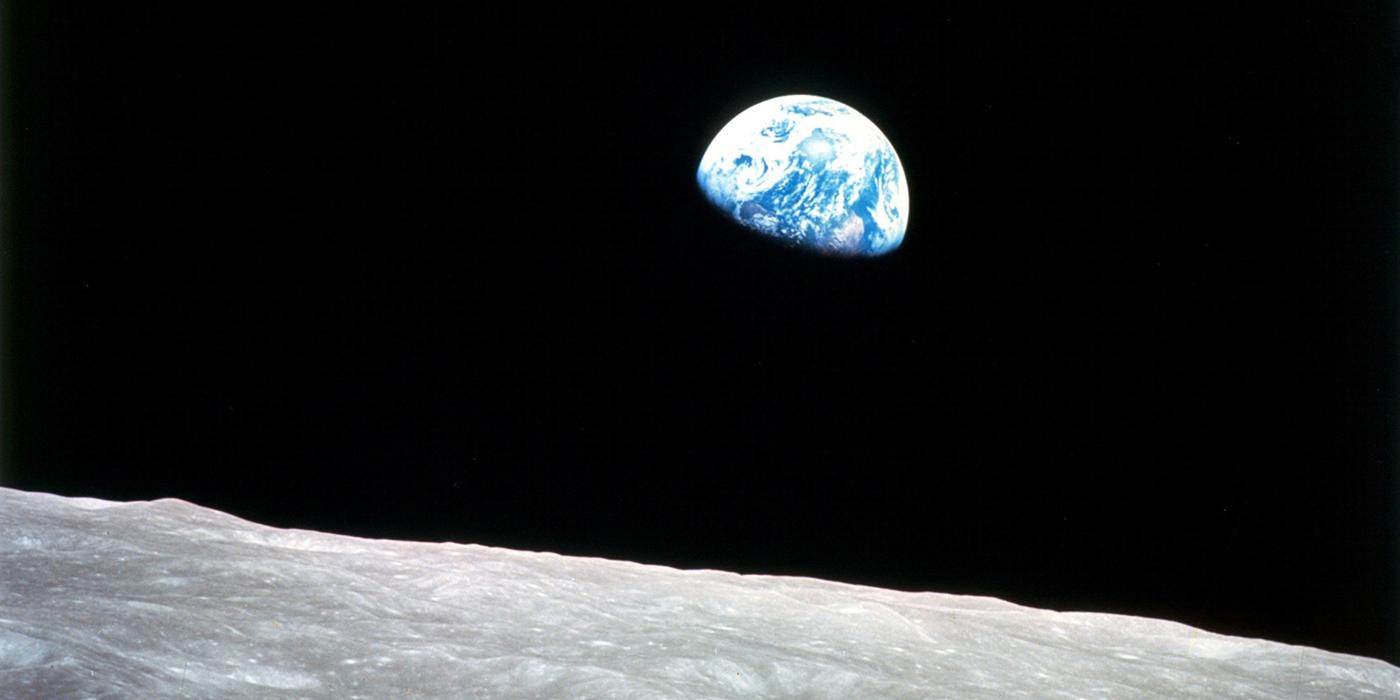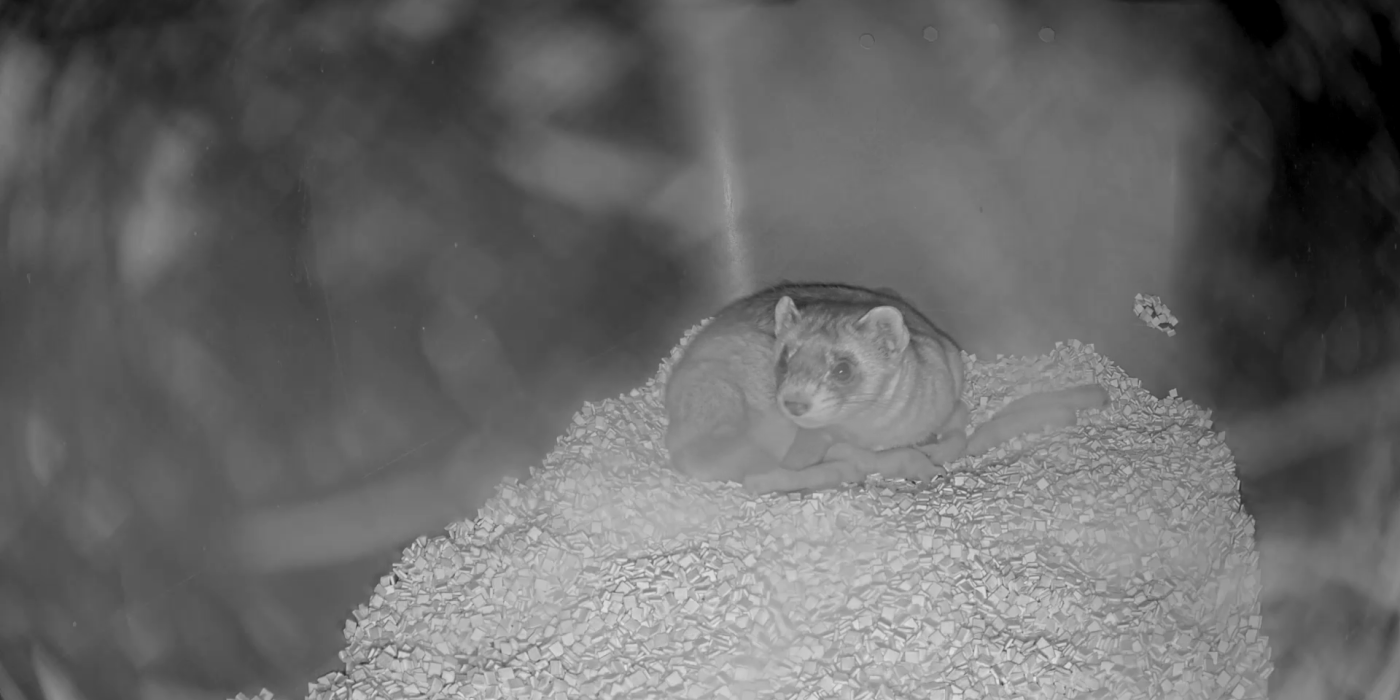Welcome, Kiwi Chicks
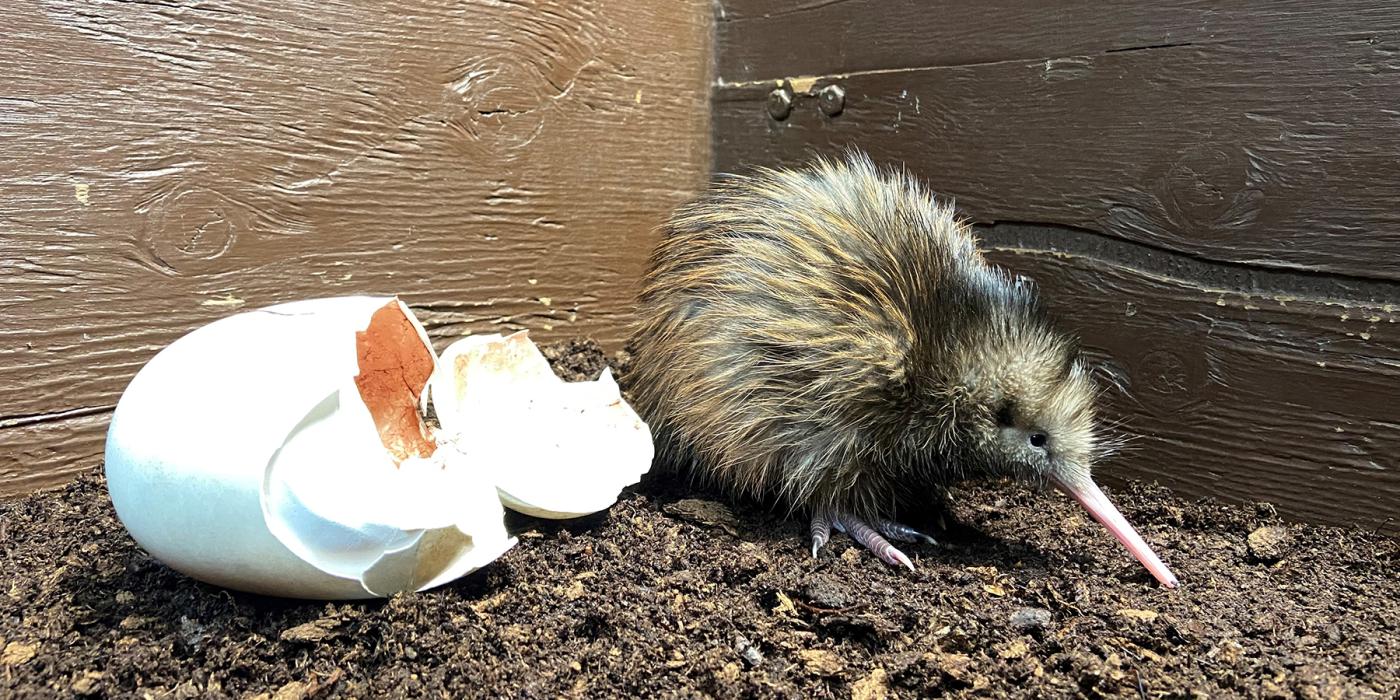
In March and April, keepers at the Smithsonian Conservation Biology Institute in Front Royal, Virginia, celebrated the arrival of two male kiwi chicks! Get to know them in this update from the bird team.
The Smithsonian Conservation Biology Institute’s bird team is celebrating the arrival of two male brown kiwi chicks, who hatched March 13 and April 7, 2022. These chicks are the eighth and ninth offspring, respectively, for their 9-year-old dam (mother) Manawa Ora and 37-year-old sire (father), Maori. Both chicks have yet to receive their official names, so here they’re referred to as First Chick and Second Chick.
VIDEO | "First Chick" hatched March 13, 2022. In order to obtain a weight on the chick, keepers place him in a shallow container. A keeper scratches the kiwi's head to encourage him to briefly sit still while the animal care team obtains an accurate weight.
Maori is an experienced father and readily incubates the eggs that Manawa Ora lays. In order to give kiwi chicks the best chance at survival, keepers pull the eggs from their parents’ nest once the egg nears the later stages of development. In the wild, brown kiwi parents do not provide any care, food or protection; the chicks are on their own. Therefore, Maori and Manawa Ora will never meet their offspring, as it would likely end in aggression. Because of this, the chicks wouldn’t imprint like many bird species; this allows the bird team to incubate, hatch and raise the chicks in a controlled environment where they can better monitor development and intervene if needed.
Since brown kiwi chicks do not imprint, keepers are able to be hands-on with them. Once a chick hatches, keepers can clean their umbilicus and look the chick over to ensure it’s healthy. Since they need to have absorbed their yolk sac fully before they begin eating food (to prevent yolk sac retention), daily weights are taken and food is only offered after a point.
VIDEO | "Second Chick" hatched April 7, 2022.
When Second Chick hatched, he took longer than usual to begin walking around. Typically, kiwi chicks start walking within the first few days. Despite being fairly precocial, or capable of moving, feeding and caring for themselves at the time of hatch, they take some time to get to that point, having underworked legs and a heavy internalized yolk sac. He was walking around during that time, but he did so less frequently than other chicks and his movement wasn’t strong. He’d spend more time recumbent and when he tried to walk he stumbled. Sometimes, instead of walking, he just scooted on his hocks. There are ways to mitigate leg issues—including supportive splints and laser therapy. Luckily, the bird team never needed to employ either. They were relieved when he began walking normally.
Compared to other avian species, kiwi develop very slowly into adulthood. The chicks at SCBI have weighed between 200 grams and 330 grams (roughly 0.5 to 0.75 pounds) at hatching, though the range for hatch weights in species is wider. When these chicks reach adulthood, they will weigh between 1.4 to 2.4 kilograms (roughly 3 to 5 pounds) for males and 2.2 to 3.2 kilograms (roughly 5 to 7 pounds) for females.
At about three weeks old, keepers moved First Chick and Second Chick from the brooder box to a larger indoor enclosure. Recently, the chicks moved to their own outdoor habitats, which are invariably more sensory. Everything is new; for the first time, they experienced rain, wind and the like. They explore these new enclosures in a manner befitting a kiwi—probing the groundcover with their long, narrow bills, stomping on vegetation and leaving behind a mess.
There’s a chance for kiwi, regardless of age, to go off of food temporarily whenever they change enclosures. When First Chick shifted from the brooder box to the larger indoor enclosure, he experienced a short bout of inappetence. It could be the distraction of a new area, the stress of moving to a new environment, a combination of both, or some other unknown reason—keepers cannot say for certain. When he settled down and consumed his diet mash of produce, pellets, meat and worms, it was a sign that he acclimated to his new home.
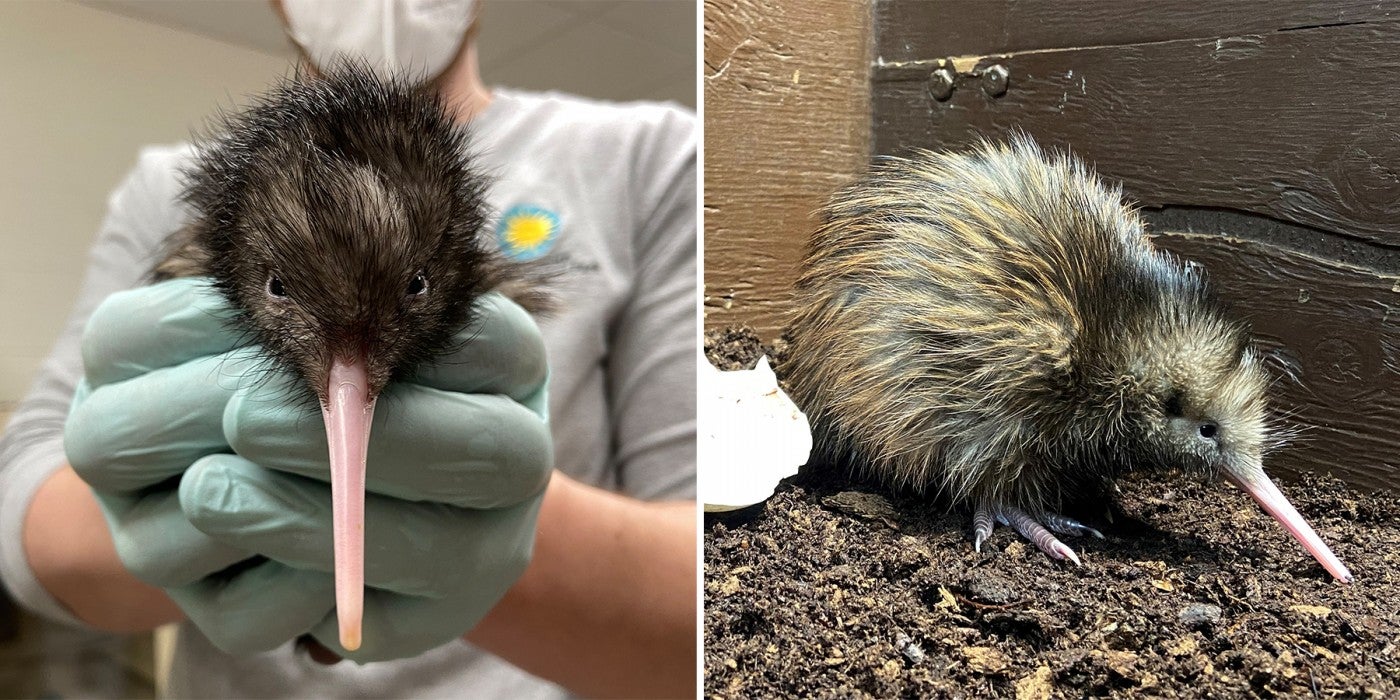
At 2 months old, the chicks are still quite calm. As they grow and their personalities develop, keepers are interested to see if they take on Manawa Ora or Maori’s traits. Manawa Ora is one of the more aggressive individuals at SCBI; she readily growls and kicks at keepers given the opportunity. Maori, on the other hand, is more relaxed in their presence. At the moment, First Chick seems to take after Manawa Ora; he is much more vocal, active and feisty than Second Chick.
The Smithsonian’s National Zoo and Conservation Biology Institute was the first institution to successfully breed these unique birds outside of New Zealand in 1975. Over the years, the Zoo has celebrated many hatchings, including 10 chicks at SCBI and seven at the Zoo. Of those birds, six have gone on to breeding programs, where they can contribute to their species’ survival. In recent years, SCBI has sent eight fertile eggs to zoos all over the country, too—from Miami to New England and places in between—to help other institutions establish or grow similar kiwi conservation programs.
Bird House keeper Kathy Brader serves as the Studbook Keeper for brown kiwi. In this role, she keeps track of all the brown kiwi in the North American Species Survival Plan—details about where they live, how they are related and information about their personalities, temperament and health. Using that information, she makes recommendations about which birds should breed to ensure zoo populations are as genetically diverse as possible.
Because the new chicks have so many siblings, they are in the “medium” range in terms of their genetic value. Eventually, they will go on to become part of the collection at other zoos, or they may have a chance to breed. For now, the bird team gets to enjoy watching them grow.
I want to help brown kiwi! What can I do?
Brown kiwi are listed as vulnerable to extinction by the International Union for Conservation of Nature. In the wild, the biggest threats they face are dogs (who kill adults) and stoats (who kill eggs and chicks). And, like many birds, they are experiencing habitat loss, predation by free-roaming house cats and may be hit by cars while searching for food or crossing the road.
If you want to help kiwi—and all bird species—follow the Zoo’s seven simple actions to live bird-friendly. There are also a number of conservation programs in New Zealand to which one could donate. If you are physically able to do so, you could also donate your time to these organizations and volunteer. You can also help just by sharing these chicks’ story and inspiring others to care about kiwi.
This story appears in the June 2022 issue of National Zoo News.
Related Species:

